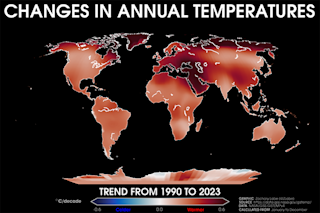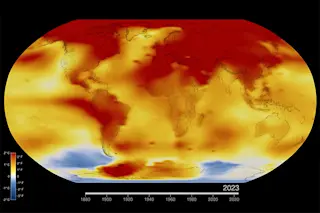An animation of weekly sea surface temperature anomalies for the past 12 weeks shows the development of warmer than normal waters in the eastern Pacific and near theInternational Date Line. (Source: National Weather Service Climate Prediction Center) The odds that an El Niño will develop by summer appear to be getting stronger. In a report released yesterday, the Australian Bureau of Meteorology raised the odds of an El Niño developing by summer (winter in the Southern Hemisphere) to greater than 70 percent. And in his monthly analysis, Klaus Wolter of NOAA's Earth Systems Research Laboratory noted that the evolution of conditions over the past four months suggest that a strong El Niño may well be on the way. He found nine cases that look similar to what has been occurring in the equatorial Pacific:
Of the 9 cases selected in this fashion, three remained either neutral (1960) or dropped back ...














